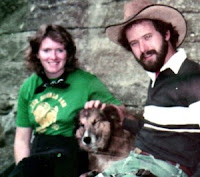 This was a good week for taking pictures here in the Ozarks. I hope you enjoy these as much as I did taking them.
This was a good week for taking pictures here in the Ozarks. I hope you enjoy these as much as I did taking them.Visit the Sky Watch Friday home page anytime after 7:30 p.m. Greenwich Mean Time on Thursdays to see sky photos from around the world. You'll be glad you did.
This was taken on Sunday December 28, 2008
 This mysterious view was offered to me on Tuesday, December 30, 2008
This mysterious view was offered to me on Tuesday, December 30, 2008 Taken on New Year's Eve 2008
Taken on New Year's Eve 2008 The First Sunset of the New Year 01-10-09
The First Sunset of the New Year 01-10-09 
This is something to look forward to this week!
FIRST METEORS OF 2009: The annual Quadrantid meteor shower peaks on Jan. 3rd when Earth enters a stream of debris from shattered comet 2003 EH1. The timing of the encounter favors observers in western North America and across the Pacific Ocean who could see dozens to hundreds of meteors during the dark hours before sunrise this Saturday morning. Visit http://spaceweather.com/ for a sky map and more information.















